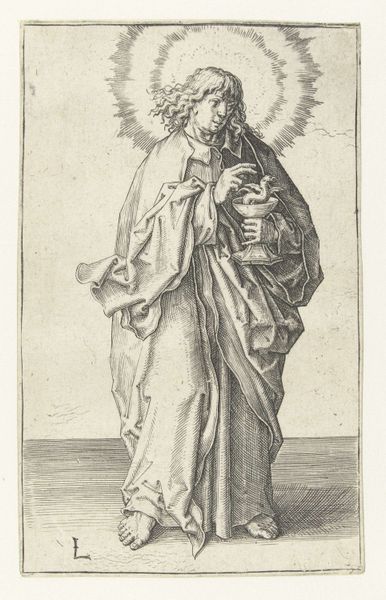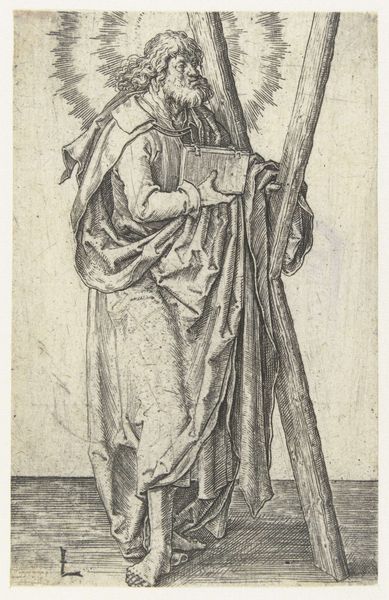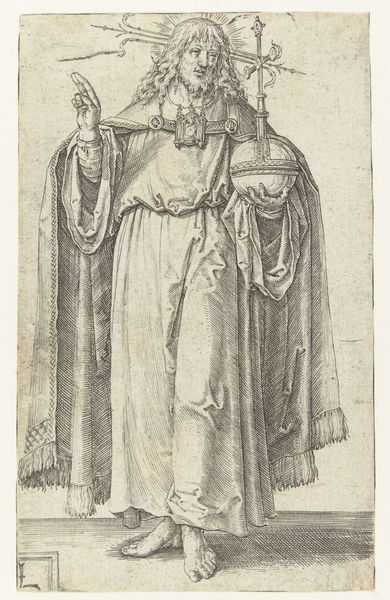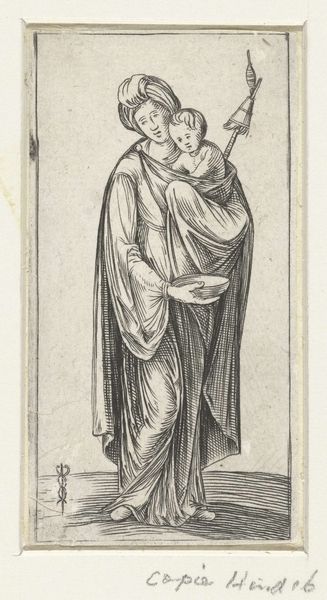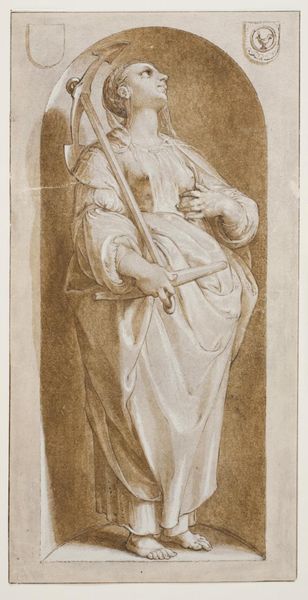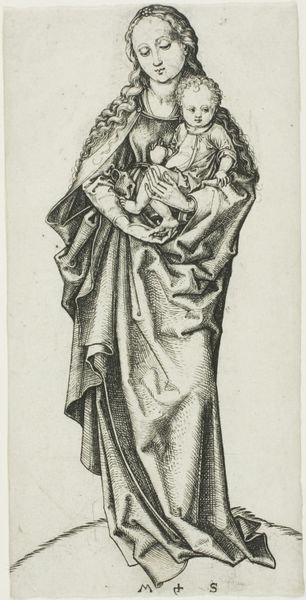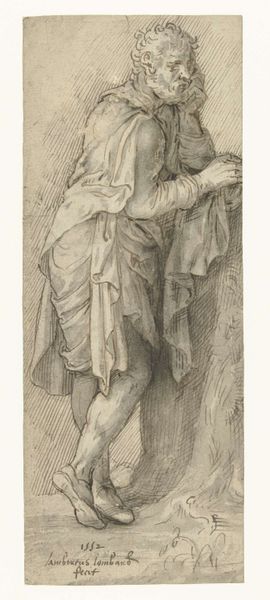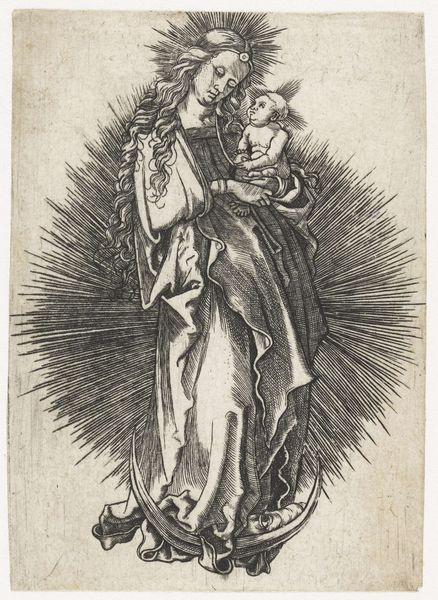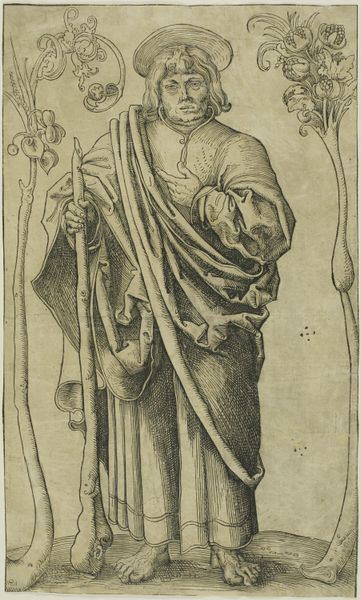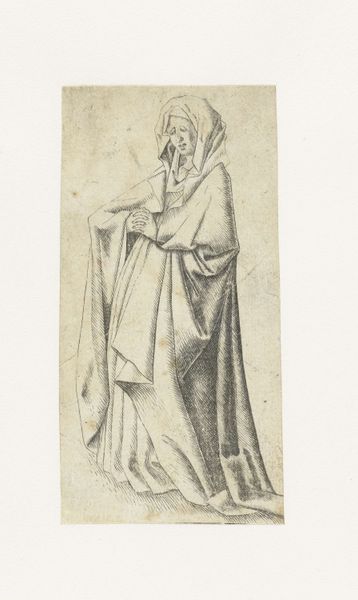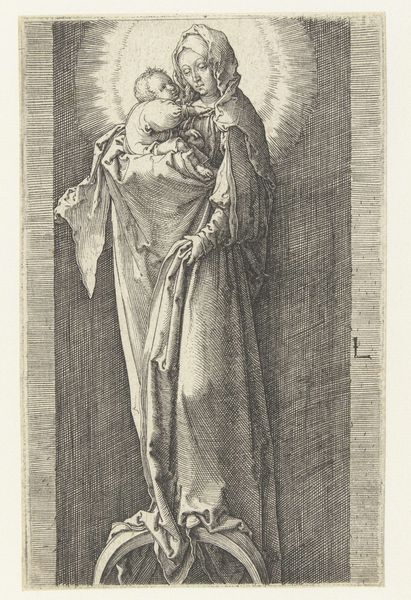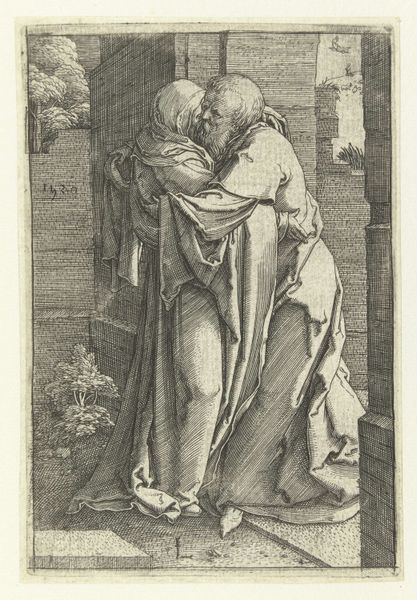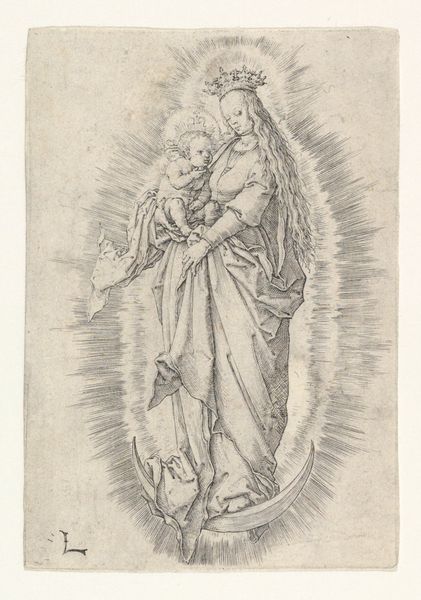
print, engraving
#
portrait
#
medieval
# print
#
figuration
#
northern-renaissance
#
engraving
Dimensions: height 150 mm, width 84 mm
Copyright: Rijks Museum: Open Domain
Curator: The artwork before us, "Standing Madonna and Child with Apple," attributed to the Master of the Amsterdam Cabinet, dates roughly between 1475 and 1480. It’s an engraving, demonstrating incredible detail considering the medium. It's instantly evocative of Northern Renaissance style, isn't it? Editor: Yes, the first thing that strikes me is the tender, almost melancholy, intimacy. The lines are so delicate, almost fragile, yet the drapery around Madonna is so heavy, so textural. It is the product of laborious attention, given the printing limitations of the era. Curator: Precisely. Think about the labor involved. Engraving required skilled craftsmanship; consider the tools, the metal plates, and the controlled pressure needed to create these precise lines. This wasn’t just 'art'; it was a production process tied to workshop practice and the print market, extending the reach of this devotional image. Editor: The apple held by the Christ child certainly demands some attention. As an iconographer, the symbol of the apple jumps out as representing the forbidden fruit and, subsequently, Christ’s role as redeemer, undoing the fall of humankind. Its placement in the child’s hand suggests a future already predetermined, wouldn’t you agree? Curator: Undeniably. And to think about its production—engravings like this were crucial for disseminating religious imagery to a wider audience beyond the elite. This one could be reproduced efficiently and relatively inexpensively. Consumption enabled accessible piety and allowed engagement with these theological themes on a much broader social scale. Editor: The flowing lines of Mary's hair contribute to a visual vocabulary of purity and spiritual grace, aligning her image with established symbolic language. That cascade contrasts nicely with the detail in the royal crown atop her head, emphasizing Mary’s regality and saintliness in religious dogma. Curator: Indeed, the production and distribution of these prints fueled demand, driving further output in a feedback loop. How materials could spread ideology still seems remarkable when you reflect on it. The social influence of art in the public consciousness became exponentially larger through printmaking. Editor: I’m struck by the overall message this iconography implies. The print condenses centuries of theological concepts into a readily accessible image, reinforcing certain power dynamics and belief systems within contemporary culture, through symbolic messaging about sin, redemption, and the role of the Madonna. Curator: Considering the economic implications—the artisans depending on this for their livelihoods, and their workshops—we witness material processes underpinning cultural beliefs and social norms. These prints aren't just art objects; they are socioeconomic artifacts, too. Editor: That is such a thorough consideration, emphasizing just how deeply art is entrenched within all aspects of humanity. From the symbolic realm to the social contexts, it's like seeing a bridge connecting eras.
Comments
No comments
Be the first to comment and join the conversation on the ultimate creative platform.
